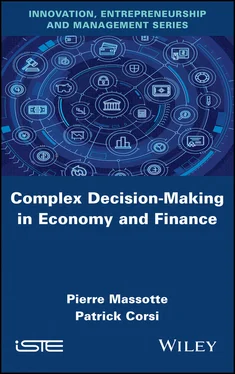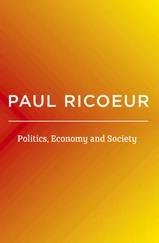– Culture: this refers to all the uses, traditions and customs, shared beliefs and convictions, ways of seeing, doing and knowing how to that ensure an implicit code of behavior and cohesion within a system or organization. As we can see, the cohesion of a system implies that a certain number of entities are linked together in order to form a network. The cohesion of the network is then ensured by links and interactions.
– Emulation and motivation: the first term refers to a state of mind or willingness to equal or surpass someone or something. Similarly, motivation is a process that triggers, continues or stops a behavior. These two concepts are used to express the activation or inhibition of a link, the reinforcement or not of an action or interaction.
The functioning and behavior of such an organization depends of course on these three elements and their combination. The French mathematician René Thom examined this problem through his theory of “catastrophes”, which allowed him to highlight transition phenomena and discontinuities, of which we will mention only two examples:
– the distribution of competences and the communication system between groups of operators are fundamental. Some imbalances always end up resulting in an explosion or implosion of behavior, which inevitably has an impact on the result;
– the interactions that condition the feedback effects are essential. Similarly, the interaction force will be the result of learning sessions, progressive and iterative reinforcement or inhibition of links between entities.
2.1.2. Reminder of the operating rules of an organization
As we have just seen, the effectiveness and efficiency of an organization carries with it the skills, culture and motivation of the system. A good distribution between these skills and good coordination between the different entities is based on a system of links with the four main characteristics.
This is synonymous with responsiveness and adaptability. Processes must be able to be linked and interact with each other as quickly as possible. The definition of needs and their characteristics must be rapid and lead to the immediate design and development of the required products and services. Current IT tools combined with customer relationship management (CRM), technology monitoring, computerized and integrated modeling and design techniques make it possible to meet this demand. This is currently the case in the automotive industry, electronics, high technologies, etc. Large companies such as Dell, IBM, Peugeot, Renault or even the Airbus EEIG consortium, etc. are structured in this way and can ensure a rapid introduction of new products to the market.
Computer technologies and the Internet have brought about two major advantages:
– the consistency, uniqueness and coherence of databases: relevant information is managed, updated and immediately available wherever it is located; it comes from a single and close virtual system;
– the drastic reduction in transaction costs: information processing has become accessible to everyone regardless of complexity;
– openness to the world: an industrial company can find a solution or part of a solution (knowledge, algorithm, component, assembly, production site, etc.) at the lowest cost anywhere on the planet and negotiate its acquisition.
These properties are those that we classify under the headings “lean” and “agile manufacturing”.
2.1.2.3. Zero crack criterion
This criterion is also the credibility of the system in which we operate. Parameters such as quality, reliability, performance, availability or even serviceability help to achieve this. However, according to an IBM internal quote, “ the product involves its organization ”. Indeed, any dysfunction, weakening or abnormal behavior of a production system will have an impact, immediately or in the long term, on the quality and performance of the resulting product or service.
As we have seen previously, the evolution of a product throughout its lifecycle is highly dependent on the system’s situation that generates or transforms it. The observation is all the more critical as a production organization behaves like a nonlinear programmable network, with feedback loops and dynamic and time-varying interactions. This implies positioning control systems at the interaction level, knowing that due to the presence of phenomena sensitive to the initial conditions, the priority is no longer at the function level, but at the interaction level.
2.1.2.4. Zero friction criterion
Companies must communicate and operate in a distributed way, in “network of networks” mode. The quality of communications and interactions is essential. It is therefore a question of having mobile teams (on the intellectual, cultural and physical levels, etc.) adaptable to unexpected situations, with non-selected partners, in innovative and unforeseen fields. This implies the formation of instant, multidisciplinary teams, which must operate without friction, using their creation, around common global objectives, in limited areas of freedom. The mobilization of such teams requires “sociable” entities, capable of working as a team in a spirit of cooperation and unfailing competition.
2.1.3. The challenges of such organizations
In self-organized systems, adaptability and the emergence of new orders are the strong points that allow them to react dynamically to changing demand conditions and needs.
With the advent of the Internet, this reactivity is permanent and responds to a constraint that is becoming more pressing every day and that we have great difficulty integrating into our processes: “ faster, faster, etc .”. In this case, how can we find the right balance between the “credibility” of systems (the reliability and quality of systems are always built according to learning curves, well determined and which require time!) and the change in “disaster” mode (in the mathematical sense of the term which implies the notion of discontinuity and revolution by going through successive cycles or phases: disorder-reconfiguration-order)?
One approach is therefore to use the “dynamic stability” model, which is very well known in large companies. We will limit ourselves here to describing some aspects related to our new economic, social and cultural paradigm.
2.1.3.1. Dynamic stability and transversal culture
We all know that changes and innovations are the result of the profound control of transversal processes in a network of networking companies (a much more powerful concept than that of an extended company). More explicitly:
– we know that creativity and innovation are linked to the progressive implementation of various technologies and the frontiers of several sciences (engineering sciences, life sciences, humanities and social sciences, etc.). We use multidisciplinary techniques here, as is the case at, for example, the Santa Fe Institute and in MIT Interscience Centres;
– similarly, to ensure the emergence of innovative products under conditions of reactivity and well-defined “sustainable development”, we are dealing here with the entire product life-cycle. We will then speak of a vertical integration of functions, with optimizing approaches, such as “continuous process improvement”;
– we also know that our new network organization requires good control and coherence of all processes and we will talk about the horizontal integration of processes. The latter often requires a review of the associated processes and procedures, and therefore the re-engineering of distributed systems.
Читать дальше












